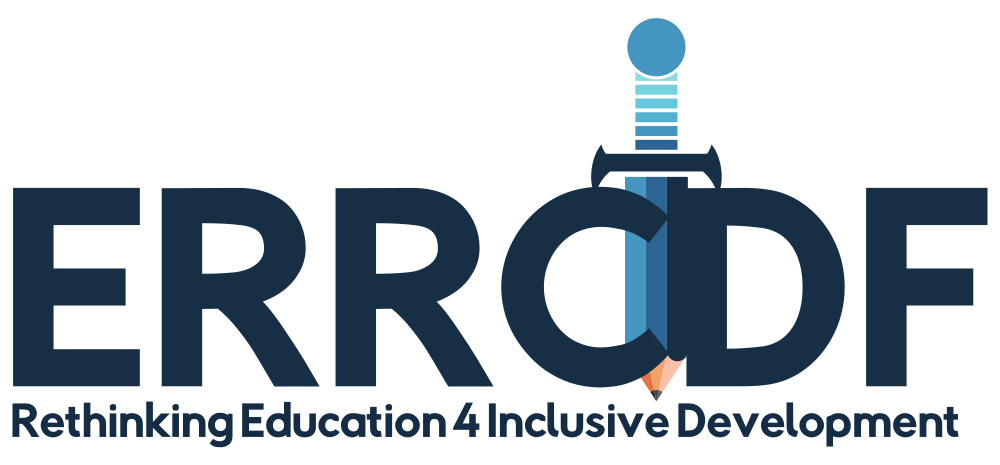Teaching and Learning of Chemistry: The Hybridity of Third Space Approach
DOI:
https://doi.org/10.51986/ijer-2021.vol3.02.08Keywords:
Teaching and learning, Affordance, Constraint, Diversity, Hybridity, Third spaceAbstract
This article explored diversity and hybridity in the third space as a teaching resource. Students bring to the classroom or third space their diverse sociocultural issues, knowledge levels of chemistry, and socioeconomic status. Educators also bring to the third space their university knowledge and culture. Hence, a classroom or third space is a hybrid. The intersection of the students’ activity systems and educators’ activity systems created a third space. Activity systems are social practices that include the norms, values, divisions of labour, and community goals. The study intended to explore the negotiations by chemistry educators and first-year students in teaching-learning of acids-bases reactions. It is a topic that most students experience challenges from secondary school to graduate level. Acids-bases are one of the threshold concepts. Qualitative research was employed in the study. Data were collected through classroom observations. A thematic approach was employed to analyse data. Five chemistry educators and their classes were purposely sampled. Cultural-Historical Activity Theory (CHAT) was employed to unpack group dynamics in a Zambian university. Interactions in the learning spaces generated constraints, tensions, diversity, and affordances for both educators and students. The findings suggest that hybridity may be a resource in teaching acids-bases threshold concepts. Educators should understand students’ knowledge and cultural diversities. Researchers can investigate how students’ different acids-bases knowledge levels can promote success in chemistry.
References
Arce M. E., Crespo B., & Míguez-Álvarez, C. (2015). Higher Education Drop-out in Spain: Particular Case of Universities in Galicia. International Education Studies, 8(5), 247–264. https://doi.org/10.5539/ies.v8n5p247
Barnard, R. (2010). Activity Theory: A Framework for Analysing Intercultural Academic Activity. Action: An International Journal of Human Activity Theory, 3, 25–37. https://hdl.handle.net/10289/4354
Batzli, J. M., Knight, J. K., Hartley, L. M., Maskiewicz, A. C., & Desy, E. A. (2016). Crossing the threshold: Bringing biological variation to the foreground. CBE—Life Sciences Education, 15(4), es9.
Bhabha, H. (1994). The postcolonial and the postmodern. In H. K. Bhabha (Ed), The location of culture (pp. 200–245). London: Routledge.
Boud, D., Cohen, R. & Sampson, J. (2002). Peer learning in higher education: Learning from and with each other. London: Kogan Page.
Bourdieu, P. (2011). The forms of capital. (1986). Cultural theory: An anthology, 1, 81-93.
Bretz, S. L., & McClary, L. (2015). Students’ understandings of acid strength: How meaningful is reliability when measuring alternative conceptions? Journal of Chemical Education, 92(2), 212–219.
Cooper, C. I., & Pearson, P. T. (2012). A genetically optimised predictive system for success in general chemistry using a diagnostic algebra test. Journal of Science Education and Technology, 21(1), 197-201.
Cousin, G. (2008). Threshold concepts: Old wine in new bottles or a new form of transactional curriculum inquiry? In R. Land, J. Meyer, & J. Smith (Eds.), Threshold concepts within the disciplines (pp. 259–272). Rotterdam: Brill Sense.
Cuenca, A., Schmeichel, M., Butler, B. M., Dinkelman, T., & Nichols Jr, J. R. (2011). Creating a “third space” in student teaching: Implications for the university supervisor’s status as outsider. Teaching and Teacher Education, 27(7), 1068-1077.
Engeström, Y. (2001). Expansive learning at work: Toward an activity theoretical reconceptualisation. Journal of Education and Work, 14(1), 133–156.
Foot, K. A. (2014). Cultural-historical activity theory: Exploring a theory to inform practice and research. Journal of Human Behavior in the Social Environment, 24(3), 329–347.
Freire, P. (2005). Pedagogy of the Oppressed (30th ed.). New York: Continuum.
Gonsalves, A. J., Seiler, G., & Salter, D. E. (2011). Rethinking resources and hybridity. Cultural Studies of Science Education, 6(2), 389-399.
Hall, S. (2002). Political belonging in a world of multiple identities. In S. Learmount (Ed.), Conceiving cosmopolitanism: Theory, context, and practice (pp. 25–31). Oxford:
Hoover, J. D., Giambatista, R. C., & Belkin, L. Y. (2012). Eyes on, hands on: Vicarious observational learning as an enhancement of direct experience. Academy of Management Learning & Education, 11(4), 591–608.
Kincheloe, J. L. (2008). Critical pedagogy primer (Vol. 1). Bern, Switzerland: Peter Lang.
Klein, E. J., Taylor, M., Onore, C., Strom, K., & Abrams, L. (2013). Finding a third space in teacher education: Creating an urban teacher residency. Teaching Education, 24(1), 27-57.
Kozulin A., Gindis, B., Ageyev, V. S. & Miller, S. M. (2003). Sociocultural theory and education: Students, teachers and knowledge. In A. Kozulin, B. Gindis, V. Ageyev, & S. Miller (Eds), Vygotsky’s educational theory and practice in cultural context (pp. 1–11). Cambridge: Cambridge University Press.
Land, R., Meyer, J. H., & Baillie, C. (2010). Editors’ preface: Threshold concepts and transformational learning. In R. Land, J. Meyer, & J. Smith (Eds.), Threshold concepts within the disciplines (Vol 42, pp. ix–xlii). Rotterdam: Brill Sense.
Land, R. (2014). Liminality close-up. Keynote Speaker Pre-Conference Think Piece for the conference, HECU7, Higher Education Close Up: Research Making a Difference. Lancaster: Lancaster University.
Larsen, M. R., Sommersel, H. B., & Larsen, M. S. (2013). Evidence on dropout phenomena at universities. Copenhagen: Danish Clearinghouse for Educational Research.
Lave, J. & Wenger, E. (1991). Situated learning: Legitimate peripheral participation. Cambridge: Cambridge University Press.
Meyer, J. H., & Land, R. (2003). Threshold Concepts and Troublesome Knowledge 1: Linkages to Ways of Thinking and Practising. In C. Rust (Ed.), Improving Student Learning – Ten Years On. Oxford: OCSLD.
Neuman, W. L. (2014). Social research methods: qualitative and quantitative approaches. London: Pearson. https://doi.org/10.3389/fpsyg.2021.696828
Newman, D., Griffin, P., & Cole, M. (2009). The construction zone: Working for cognitive change in school. Cambridge University Press.
Pinarbasi, T. (2007). Turkish undergraduates’ misconceptions on acids and bases. Journal of Baltic Science Education, 6(1), 23–34.
Sadhul, S., Tensiana, M. T., Cahyani, V. P., Laka, A. F., Annisa, D., & Fahriyah, A. R. (2017). Analysis of acid-base misconceptions using modified certainty of response index (CRI) and diagnostic interview for different student levels cognitive. International Journal of Science and Applied Science Conference Series, 1(2), 91–100, https://doi.org/10.20961/ijsascs.v1i2.5126
Sannino, A. (2011). Activity theory as an activist and interventionist theory. Theory & Psychology, 21(5), 571–597. https://doi.org/10.1177/0959354311417485
Smart, J. B., & Marshall, J. C. (2012). Interactions between classroom discourse, teacher questioning, and student cognitive engagement in middle school science. Journal Science Teacher Education, 24, 249–267. https://doi.org/10.1007/s10972-012-9297-9
Timofte, R. S. (2015). Threshold concepts approach to curriculum development: A missing piece in chemistry students’ retention puzzle? PedActa, 5(2), 83–90.
Ültay, N., & Calik, M. (2015). A comparison of different teaching designs of ‘acids and bases’ subject. Eurasia Journal of Mathematics, Science and Technology Education, 12(1), 57–86. https://doi.org/10.12973/eurasia.2016.1422a
Vygotsky, L. (1978). Mind in society. Cambridge: MIT Press.
Wenger, E. (2010). Communities of practice and social learning systems: The career of a concept. In E. Blackmore (Ed.), Social learning systems and communities of practice (pp. 179–198). Cham: Springer.
Wullur, B. G. (2012). Invitational Teaching and Failure Rate of Teachers of Universitas Klabat. Didasko, 1(1), 1–13.
Downloads
Published
How to Cite
Issue
Section
License
Copyright (c) 2021 Royda Kampamba

This work is licensed under a Creative Commons Attribution-NonCommercial-NoDerivatives 4.0 International License.










